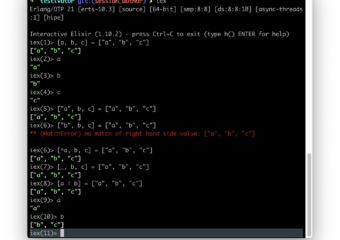How Big Is Your Confluence Wiki
TL;DR Many companies use Atlassian products. It starts with JIRA, and at some point, Confluence becomes a place for documentation. After some time, you will need to know how big…
How To Make Application In Elm
TL;DR In the previous post, we learned how to handle Maybe Elm Value. But our Application did not show a like button. In today’s post, we explain how we solved…
How To Pattern Match Lists In Elixir
elixir, functional programming
TL;DR In the previous post, we presented Variables In Elixir Pattern Matching. Today we explain how to make pattern matching on Elixir lists. This post is part of the functional language…
What Is Directed Graph
BBST Foundations, introduction
TL;DR In the previous post, we recapped some of the oldest software testing definitions. Today we introduce Directed Graphs that are an important foundation for many test coverage criteria. We…
Testing The Earthquake Science
TL;DR In 2020 my hometown Zagreb was hit by two earthquakes. In this post, I will try to sublime how an earthquake works and why we can not predict earthquakes….
Risks Related To Software Upgrade
TL;DR In the last post, we presented a Recipe For Creating A Bug Taxonomy. The idea was from this excellent paper: Bug Taxonomies: Use Them to Generate Better Tests [Vijayaraghavan,…
Excellent Example How To Check Are We Building The Right Thing
TL;DR This week’s reading list gave you an excellent checklist on how to verify we are building the right thing. According to Beizer-Testing levels, a development organization could be at…











